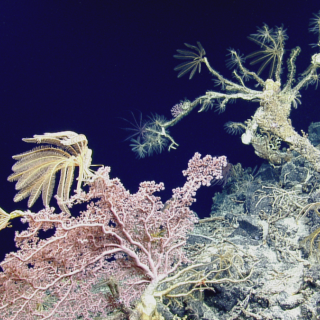Chimera and Friends in American Samoa
Our Corps of Exploration spotted a variety of deep-sea fish and invertebrates while exploring a seamount in the southern region of American Samoa waters during the E Mamana Ou Gataifale II (NA165) expedition. At almost 2,000 meters deep, the team spotted a chimera- also known as the “ghost shark” because it’s closely related to sharks. Next, spot a halosaur, an eel-shaped fish found only in the benthic regions of the ocean. Along the slope, the team spotted a unique-looking tunicate (aka filter-feeding marine invertebrate) whose semi-translucent football-shaped form nearly blended in with the seafloor. These videos remind us of the beautiful diversity found in the deep ocean of the South Pacific and how important it is to keep exploring in and around the National Marine Sanctuary of American Samoa.
The E Mamana Ou Gataifale II expedition was led by Ocean Exploration Trust and funded by NOAA Ocean Exploration, NOAA Office of Marine and Aviation Operations Uncrewed Systems Operations Center, and the Bureau of Ocean Energy Management via the Ocean Exploration Cooperative Institute in partnership with the National Marine Sanctuary of American Samoa and with support from Woods Hole Oceanographic Institution and Air/Sea Heritage Foundation.

E Mamana Ou Gataifale II - American Samoa
American Samoa is the southernmost U.S. territory, centered in the South Pacific, 2,300 miles southwest of Hawaiʻi, and 1,500 miles northeast of New Zealand. It is home to the cradle of Polynesia’s oldest culture.



